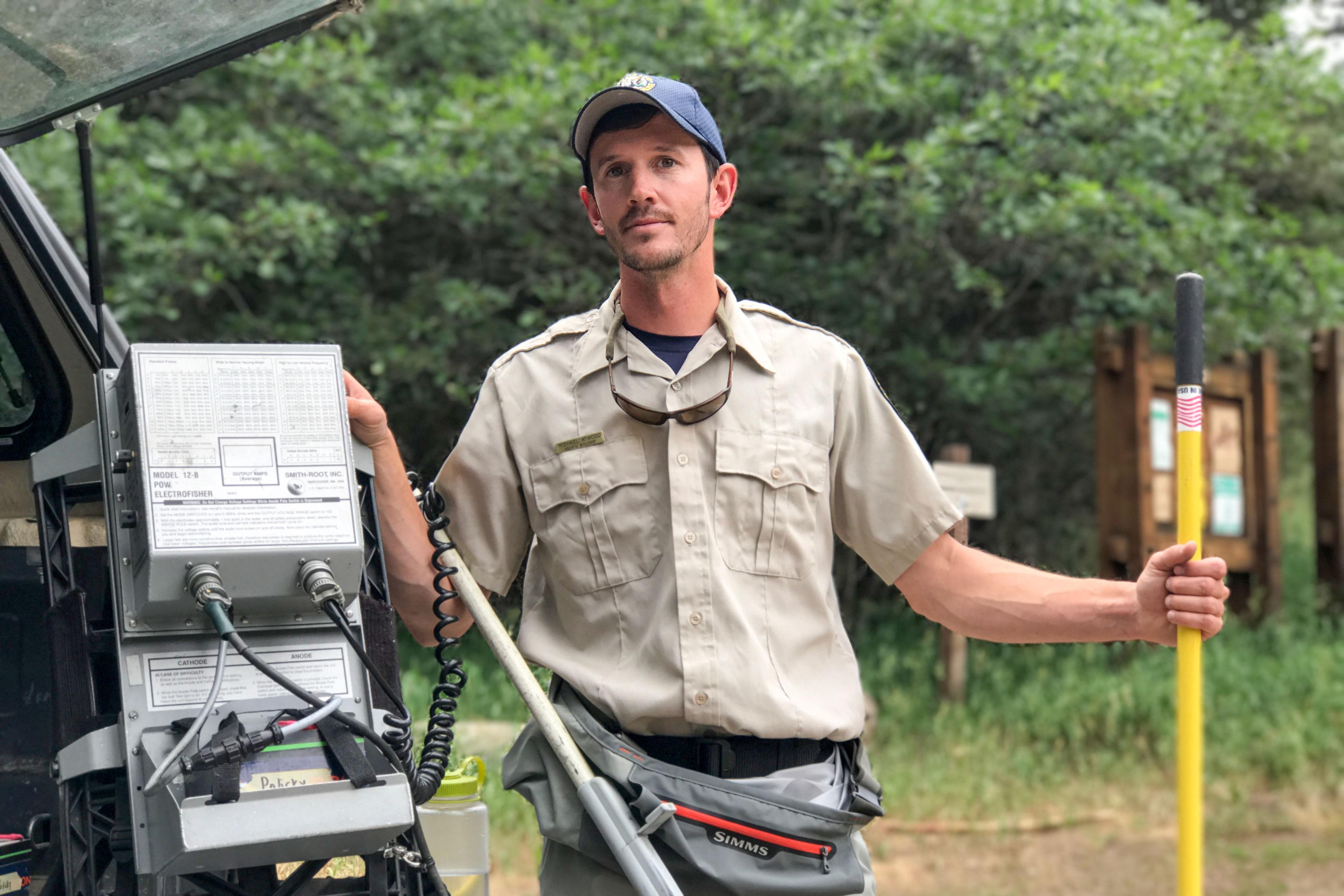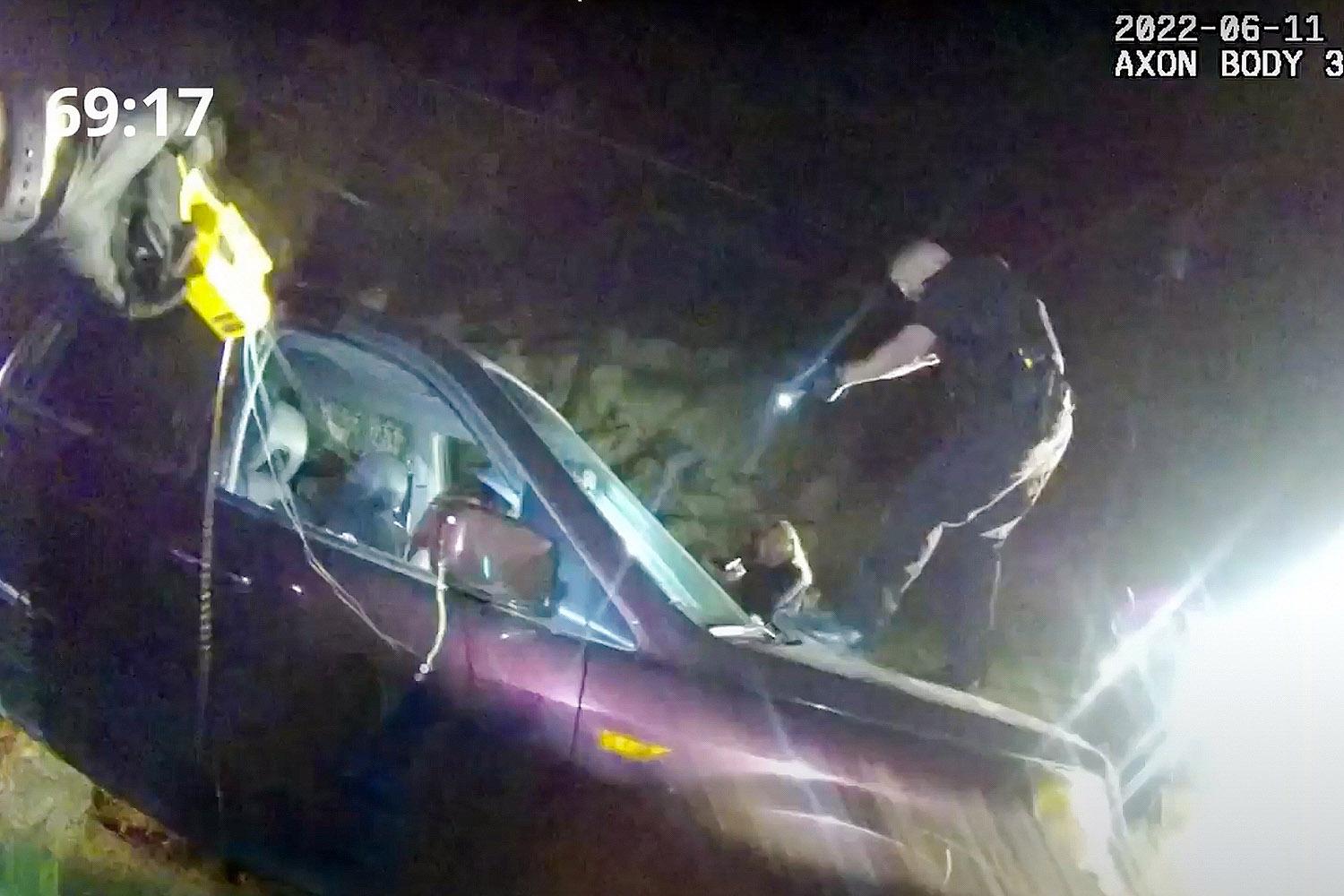
State biologists say they’ve saved a threatened native Colorado trout that was almost wiped out by the Hayden Pass Wildfire. The trout, captured behind fire lines in 2016, have successfully spawned, meaning their future fish generations will likely be reintroduced into the wild.
“We had to wear hard hats, fire pants and a fire shirt,” Michael Atwood, an aquatic biologist with Colorado Parks and Wildlife, said of the special training and gear they needed for the fish rescue. “So everyone looked the same. Everyone was fire ready.”

More than 30 staff and volunteers from various state agencies rushed to get to Hayden Creek, where the small population of rare trout lived. They saved nearly 200 trout that day.
But why all the effort? Biologists believe these trout are native to Colorado; that they were here before settlers stocked the state’s rivers with Rainbow, Brown and Brook trout in the late 1800’s.
Colorado’s native fish, like the trout found in Hayden Creek, are on the decline.
Conservation efforts had been put in place for the trout, including a migration barrier in Hayden Creek. It was constructed in 2003 to prevent other fish downstream from colonizing the stretch of stream these trout lived in.

Biologists also don’t want different trout to spawn with this group and change the population’s genetics. The line is something “worth preserving,” said Josh Nehring, a senior aquatic biologist with Parks and Wildlife. These unique trout share genes with just two fish that were pickled in 1889 and are currently kept at the Smithsonian.
“They're such an important fish that I think it would have been pretty devastating to see it go and see a portion of our history gone,” Nehring said.
There was some debate whether they needed to rush in and save the fish, Nehring said. But he’s glad they did. A few weeks after the rescue, back in 2016, they returned to Hayden Creek and they didn’t find any trout.
“Now we have all of our eggs in one basket,” Nehring noted.

He means that literally. Biologists spawned the trout at the Roaring Judy Hatchery in Gunnison. Seth Firestone, the manager of the hatchery, is anxious about the high-stakes effort to save this cutthroat.
"Now that we've spawned some of those fish that helps us relax a little bit,” Firestone said. “Because now we have some eggs on hand, and hopefully we'll be able to turn those into more fish in hopes to recover this special population."
Going inside a wildfire might be considered more heroic, but staff at the hatchery are doing their part too by digging up earthworms by hand for the fish. Firestone said it was a challenge to get the rescues to eat, so they needed something actually alive and wriggling around.
The fish were artificially spawned by rubbing the bellies of the females until they ovulated. The roe was then mixed with water and milt from the males and are currently incubating. Firestone expects the eggs to hatch in late July.
The rescued trout will likely stay in the hatchery, since the water quality in Hayden Creek won’t support the cutthroat for upward of seven years. Their offspring though may be reintroduced to other creeks in the Arkansas River Watershed as non-native fish are removed.
“If you have another incident like we had at Hayden Pass, when that happens you know that you have five other locations where those fish are protected,” Firestone said.









